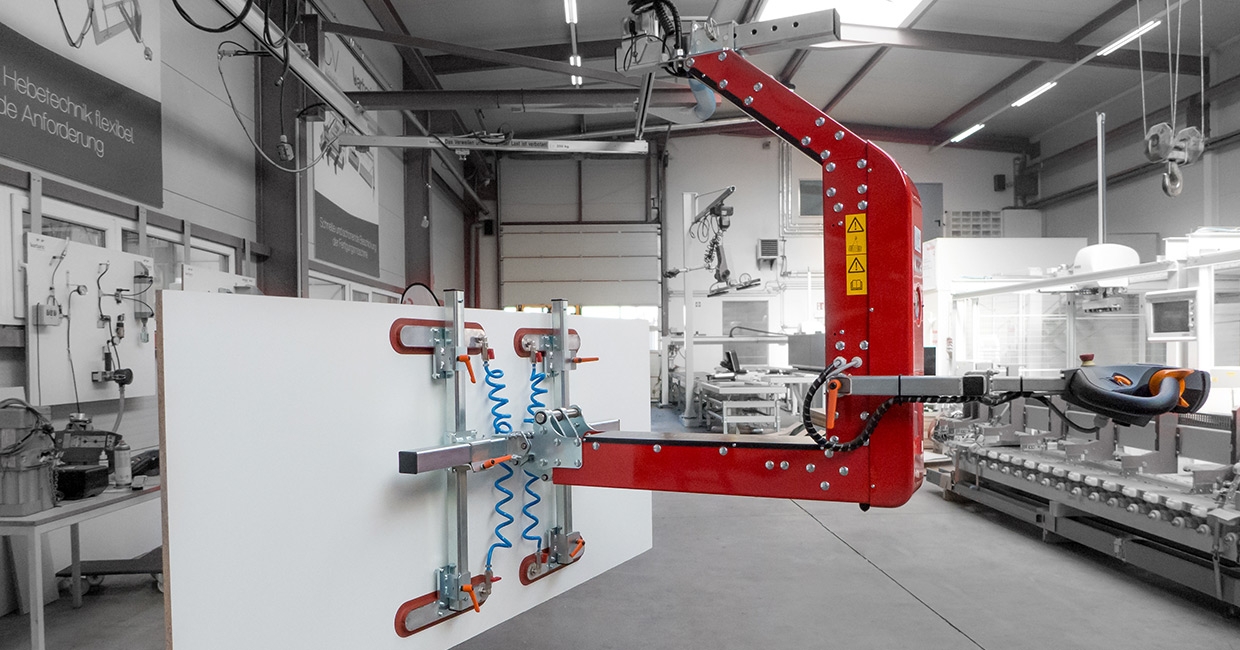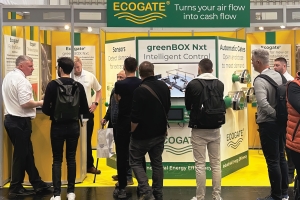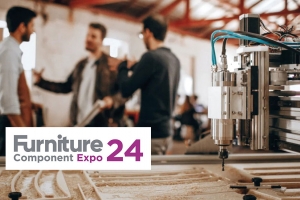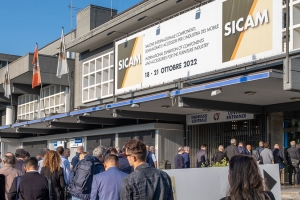Vacuum material handling solutions in modern furniture production are not exactly a novelty, as they have widely been used since the last century – this, however, does not mean the engineering behind these vacuum-lifting solutions has to be outdated. There have been many developments in recent years that led to big improvements regarding ergonomics, technical features, and safety, explains Barbaric.
One improvement of modern vacuum lifters has been the integration of the hoisting equipment into the vacuum-lifting device. This allows the integration of the vertical movement into the operating handle of the lifting unit, and removes the need for a separate chain hoist controller altogether.
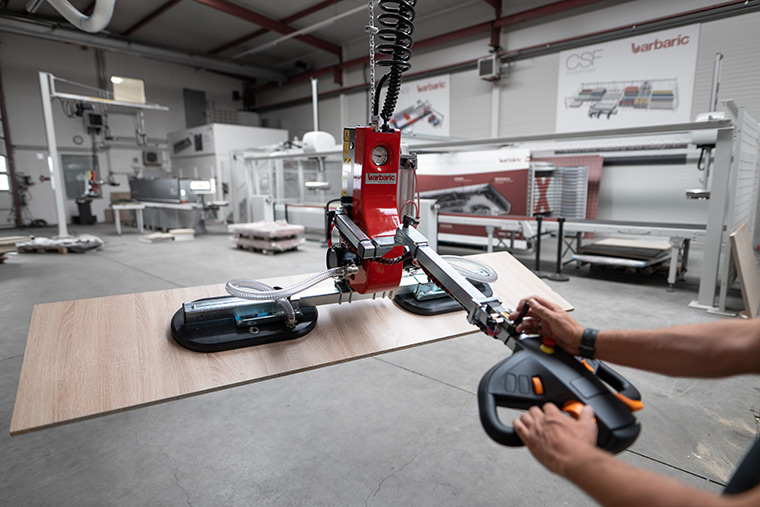
Engineering choices in vacuum-handling solutions lead to an increase of resource efficiency, productivity and safety
The operator can conveniently control all features of the vacuum lifter without having to remove a hand from the operating handle, leading to a steadier and more secure stabilisation of the load, and therefore improved ergonomics. High-end lifting devices even go a step further and use seamlessly integrated frequency inverters for the movement of the chain hoist, allowing for a smooth and infinitely variable control and exact positioning of the load.
A factor that is often overlooked during the selection of lifting gear is the choice of vacuum-generation unit. According to Barbaric, where applicable, the smaller, cheaper, and lower-maintenance vacuum ejector only has advantages over traditional vacuum pumps, that are not only slow and heavy but have a high electricity consumption as well.
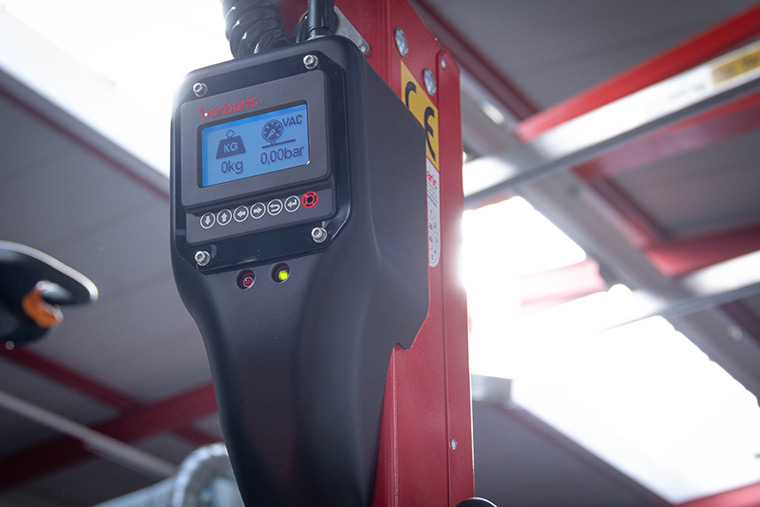
While one could easily think that the energy efficiency of a lifter is negligible, it can play a huge economical role over the long term. Non-intelligent, less expensive vacuum lifters in particular often more than eat up the economic advantage during the purchase after a short period of using the lifters. Due to the high cost of pressurised air, it is essential that all air consumption is switched off after a sufficient vacuum level is reached, to not waste energy resources, states Barbaric.
Another big advancement, the introduction of software-controlled lifting units combined with matching sensor and display technology, opens a whole new world of technical features not considered previously. Continuous load and vacuum monitoring, connection capabilities (Wi-Fi, Bluetooth), predictive maintenance functions as well as a wide range of safety features are only the tip of the iceberg.
With these modern control units, vacuum lifters can also prompt the user to perform a mandatory safety check during daily start-up of the system. Step by step, the control unit guides the user through the visual inspection as well as a function check, making sure all vital functions of the lifter are operating at the highest possible safety standard
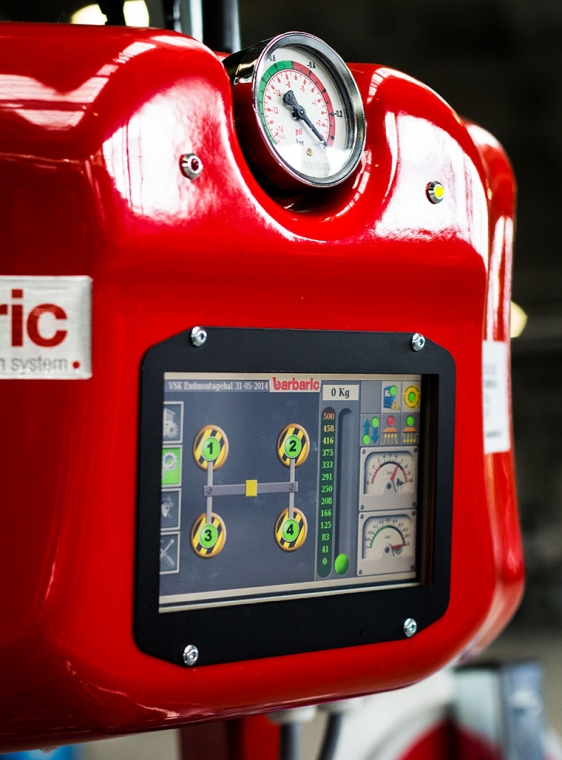
Before the lifter can be used in production, a guided suction test must be performed. This procedure tests for leakage in the vacuum system and determines the integrity of the vacuum cup sealing lip. The results of this procedure are digitally logged and can also be used for maintenance and troubleshooting purposes.
Thinking further, in the future material-handling devices could be centrally controlled through a logistics server, telling the user how to handle parts or panels, or where to place them. This comes especially handy in packaging applications, where small mistakes and slightly misplaced panels can lead to customers receiving another customer’s parts. Parts, as well as their target location, can be easily identified through pre-existing barcodes or through direct communication with the production machine.
Barbaric says that it not only takes the above-mentioned requirements regarding safety, functionality,and efficiency to heart, but always strives to be one step ahead.



